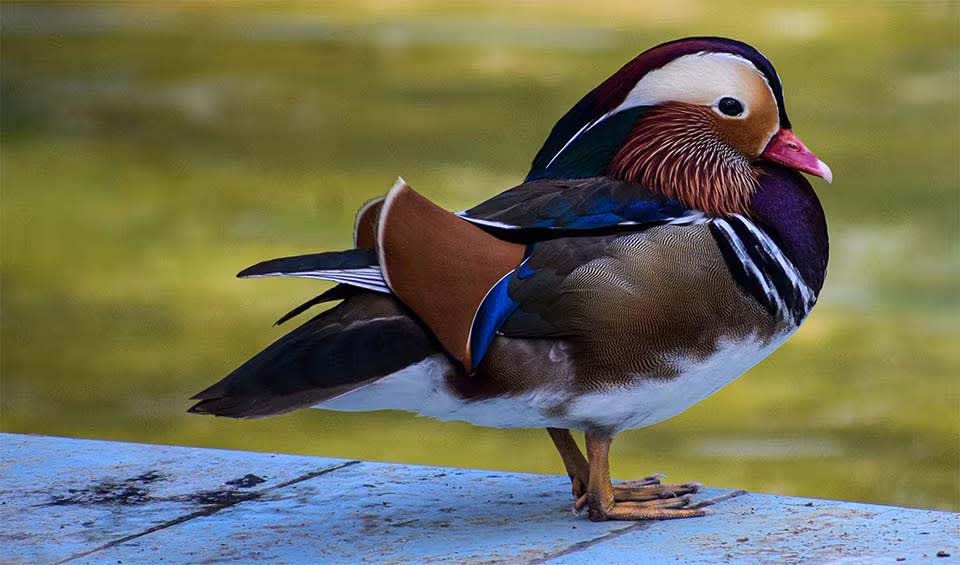Aix – Wood & Mandarin duck
Models for study sexual dimorphism (difference between sexes)!
Aix is a small but remarkably distinctive group within the Anatidae family, comprising just two species known for their striking appearance and interesting behaviors. The genus name ‘Aix’ is derived from Ancient Greek, a term Aristotle once used to describe an unknown water bird, and today, it encompasses the wood duck (Aix sponsa) and the Mandarin duck (Aix galericulata). Both species are celebrated for their ornate plumage and have captivated human observers for centuries.
The wood and Mandarin ducks share several characteristics, including their habitat preferences and migratory patterns. They are typically found in North America and Asia’s wooded swamps and freshwater marshes. These environments offer the shelter and resources necessary for survival and reproductive strategies.
Both species migrate from the cooler northern parts of their range to the more temperate southern regions during the winter months. This seasonal movement allows them to exploit different resources and ensures survival in changing climates. These ducks favor serene woodland water bodies, such as streams and ponds, with ample cover from predators and a plentiful food supply.
In terms of appearance, the drakes (male ducks) of both species exhibit a remarkable array of colors and patterns. The wood duck drake, for instance, boasts iridescent green and purple feathers on its head, a white throat, a chestnut breast, and intricate patterns along its sides and back. The Mandarin drake is equally impressive, with flamboyant orange plumes on its face, a purple chest, and sail-like wings. These vibrant plumages play crucial roles in courtship displays and mate selection.
While less colorful, the females possess their own subtle beauty with mottled brown feathers that provide excellent camouflage in their wooded habitats. This sexual dimorphism is typical of many duck species and highlights the different selective pressures males and females face. Males use bright colors to attract mates and deter rivals, while females require inconspicuous plumage to protect their nests from predators.
Species in this genus
Mandarin duck
Revered in many cultures for their beauty, grace, and symbolism of love and fidelity
Wood duck
The red-eyed hipsters of the duck world



